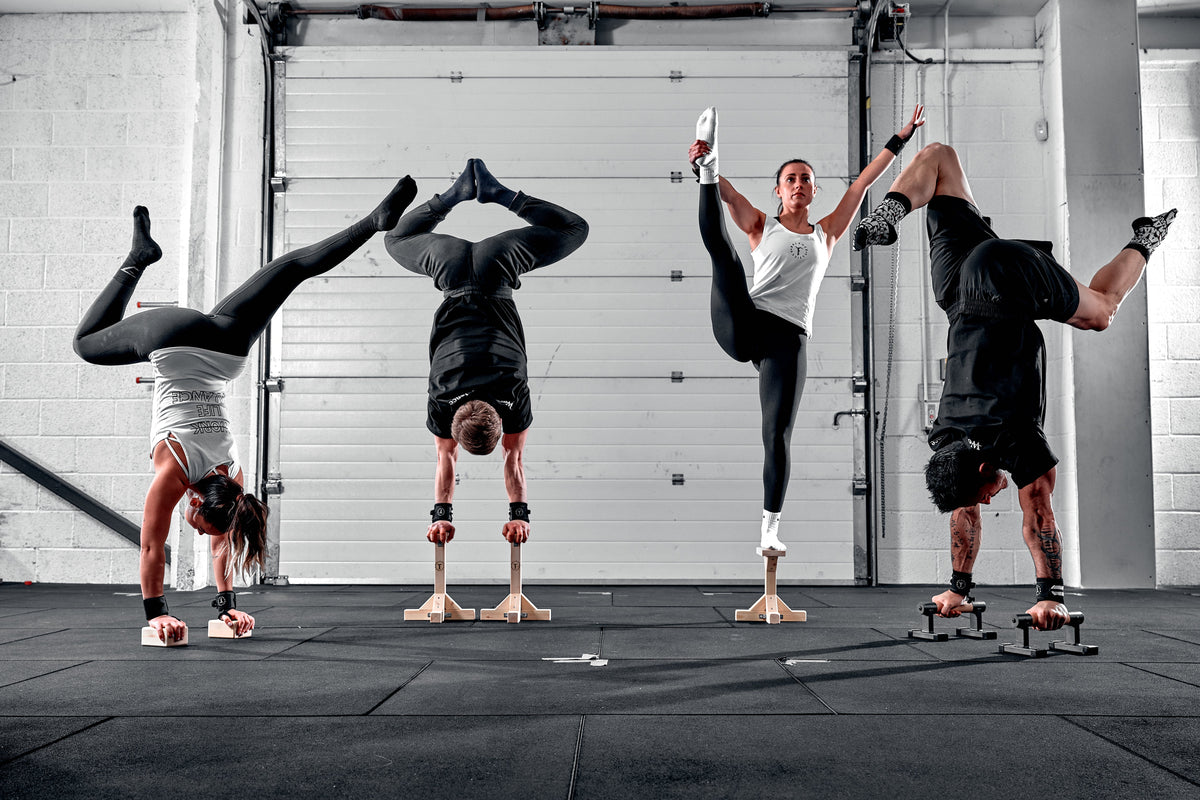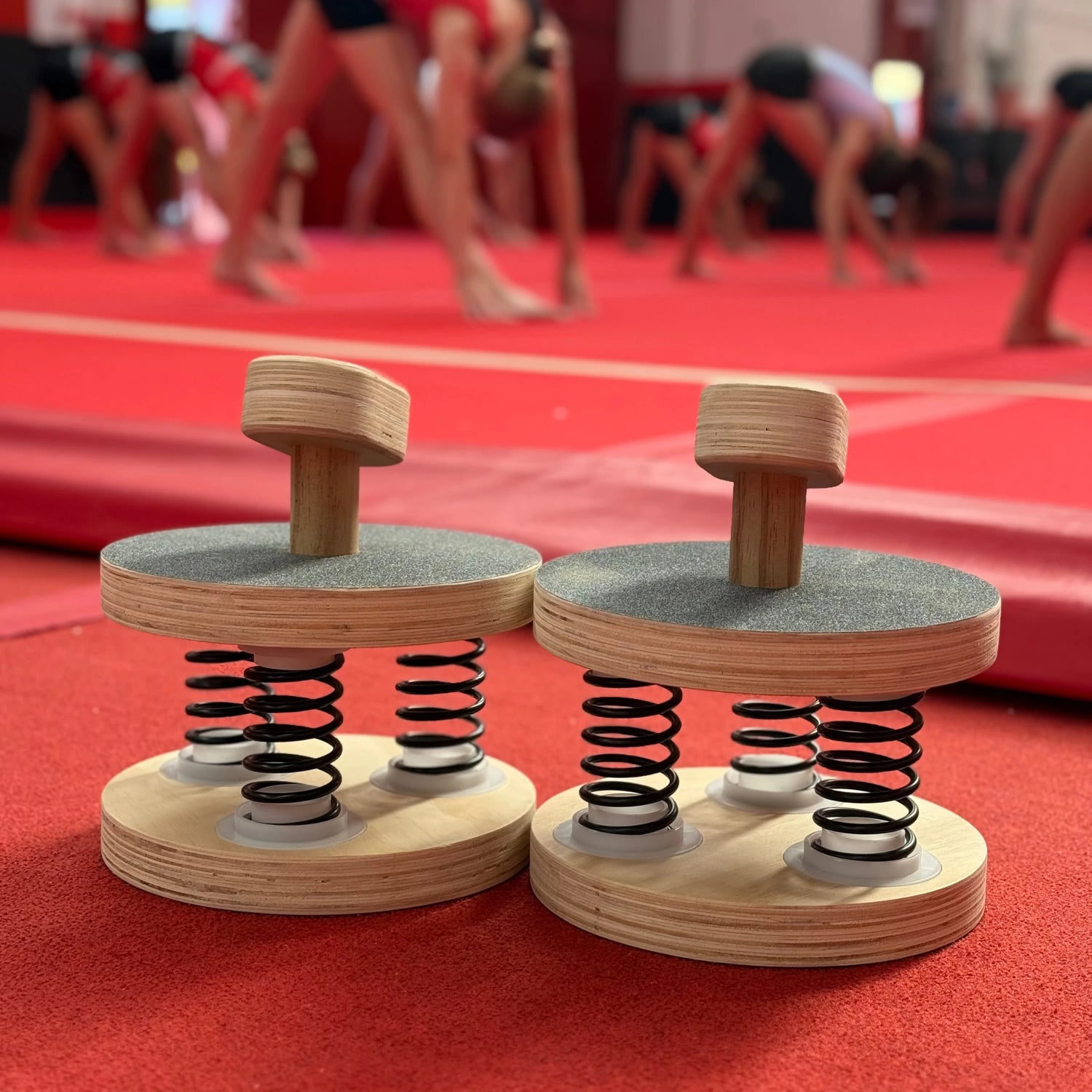
Balance Training: Benefits, Exercises and More
|
|
Time to read 5 min

Check out our exciting new balance product launches. Developed and tested by...
|
|
Time to read 5 min
Balance training is a crucial aspect of fitness that often gets overlooked, yet it offers substantial benefits for people of all ages and fitness levels.
By incorporating balance exercises into your daily routine, you can improve your overall stability, prevent injuries, and enhance your performance in various physical activities.
This guide explores the benefits of balance training, exercises suitable for different fitness levels, and how to integrate them into your daily life.
Balance training and its benefits are becoming far more widely recognised as a vital key to longevity. Perhaps you weight train regularly, train cardio, or both and are wondering how to keep injury at bay.
Balance training is a great way to compliment a stretching routine and ensure you perform at your best, regardless of your fitness discipline.
Balance training helps improve your body's ability to maintain its center of gravity, enhancing your stability and coordination. This is particularly beneficial for older adults who may be at an increased risk of falling.
Strengthening the muscles involved in balance, particularly the core and lower body, can significantly reduce the risk of injury. By improving your reaction time and stability, balance exercises can help you avoid falls and other accidents.
For athletes, balance training can lead to better performance in sports and athletic activities. Good balance allows for more efficient movement and control, which is essential in dynamic sports.
Maintaining proper alignment is essential for overall health and preventing back pain. Balance exercises engage the core muscles, promoting better posture and alignment.
Incorporating balance exercises into your workout routine can help increase muscle strength and mass, particularly in the lower body and core.
Good balance is essential for performing everyday tasks, such as walking, climbing stairs, and carrying objects. Improving your balance can make these activities easier and safer.
There are two main types of balance exercises: static and dynamic. Both types are important for developing overall stability and coordination.
Static exercises involve maintaining a stationary position, which helps build the foundational strength and stability needed for more complex movements.
Instructions:
Starting Position: Stand with your feet hip-width apart.
Lift your right foot off the ground, balancing on your left leg.
Hold this position for 30 seconds to 1 minute.
Switch Sides: Repeat on the other leg.
Instructions:
Starting Position: Stand with your feet together.
Shift your weight onto your right foot.
Place the sole of your left foot on your inner right thigh or calf (avoid the knee).
Hands: Bring your hands to your chest in a prayer position or extend them overhead.
Hold for 30 seconds to 1 minute.
Switch Sides: Repeat on the other leg.
Dynamic exercises involve movement and help improve your ability to maintain balance while performing various activities.
Instructions:
Starting Position: Stand with feet hip-width apart.
Shift your weight onto your right foot.
Bend forward at the hips, lifting your left leg behind you.
Reach towards the ground with your right hand.
Return to the starting position.
Switch Sides: Repeat on the other leg.
Instructions:
Starting Position: Stand with your feet hip-width apart.
Shift your weight to your right leg, lifting your left foot slightly off the ground.
Return to center and then shift your weight to your left leg, lifting your right foot.
Continue shifting weight side to side for 1-2 minutes.
Incorporating balance equipment can provide an added challenge and further enhance your balance training.
A BOSU ball is a versatile piece of equipment for balance training that can be used for various balance exercises.
Exercises:
Standing on the Flat Side: Perform squats or balance exercises while standing on the flat side of the BOSU ball.
Standing on the Dome Side: Perform weight shifts or one-legged stances on the dome side for increased difficulty.
A balance board is another excellent tool for improving balance and stability.
Exercises:
Rocking Side to Side: Stand on the balance board and rock side to side.
Single-Leg Stance: Perform a one-legged stance on the balance board for an advanced challenge.
A stability ball can be used to enhance core strength and balance and overall balance training.
Exercises:
Seated Balance: Sit on the stability ball and lift one foot off the ground, holding for 30 seconds. Switch Sides: Repeat with the other foot.
Plank on Stability Ball: Place your feet or hands on the stability ball while performing a plank for an added challenge.
Older adults can significantly benefit from balance training to reduce the risk of falls and improve mobility.
Exercises:
Seated Balance Exercises: Perform simple exercises while seated to improve core strength and stability.
Standing March: March in place, lifting your knees to hip height, to improve coordination and balance.
Athletes can enhance their performance by incorporating balance training into their routine.
Exercises:
Dynamic Movements: Incorporate movements that mimic athletic activities, such as jumping and landing on one foot.
Balance Drills: Use balance boards or BOSU balls to challenge stability during sports-specific movements.
Beginners should start with basic exercises to build a solid foundation.
Exercises:
One-Legged Stance: Begin with this simple exercise to improve balance and stability.
Weight Shifts: Practice shifting weight from one leg to the other to develop coordination.
Incorporate balance exercises into your daily routine to make it a habit. Simple exercises like standing on one leg while brushing your teeth can be effective.
Include balance training exercises as part of your warm-up and cool-down during workouts to enhance stability and prevent injuries.
Adjust the intensity and difficulty of balance exercises based on your fitness level. Start with basic exercises and progress to more challenging movements as your stability improves.
Develop a balance training program that includes a variety of exercises to target different muscle groups and improve overall stability.
The vestibular system, located in the inner ear, helps regulate balance and spatial orientation. Balance exercises can help enhance the function of this system.
Your visual system plays a crucial role in maintaining balance. Focusing on a fixed point during balance exercises can help improve stability.
This system involves the sensation of touch and proprioception (awareness of body position). Balance training enhances proprioception, helping you maintain stability.
Regular balance training can help prevent various health conditions, such as high blood pressure, heart disease, and Parkinson’s disease. It can also improve symptoms and mobility for those already living with these conditions.
Balance exercises can reduce the risk of depression and anxiety by promoting physical activity and improving overall well-being.
Balance training, combined with strength training, can help increase muscle mass and overall strength, contributing to better health and physical performance.
Balance training is a valuable component of any fitness routine, offering numerous benefits for people of all ages and fitness levels.
By incorporating static and dynamic balance training exercises, using balance equipment, and understanding the science behind balance, you can improve your stability, prevent injuries, and enhance your athletic performance.
Start integrating balance exercises into your daily routine today to enjoy the many health benefits and improve your overall quality of life.




